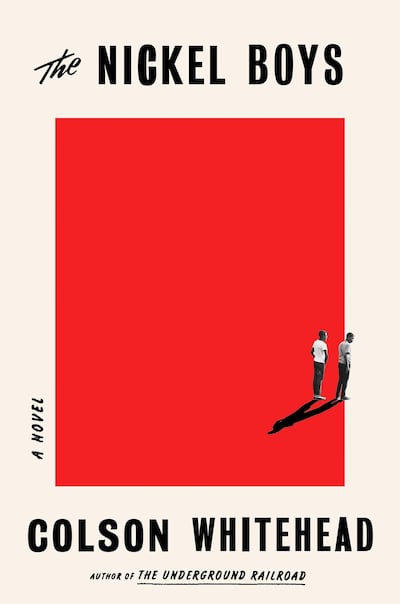The question to put to any author whose novel about a fugitive slave was a bestseller and critical triumph, receiving accolades such as the Pulitzer Prize and the National Book Award, as well as getting a solid stamp of approval from Barack Obama, must surely be: what, artistically, do you do next? In the case of Colson Whitehead, the answer is clear: you continue to play to your considerable strengths by once once again shining a light on a dark chapter of America's history.
His previous book, The Underground Railroad, was an audacious blend of stark, grounded reality and far-flung fantasy. Whitehead's latest novel, The Nickel Boys, eschews the fantasy but is none the worse for it.
Set during the Jim Crow era and based on the true story of the Dozier School for Boys in Marianna, Florida – a house of horrors that not only ruined lives but claimed some – the tale follows two pupils, or inmates, as they weather a campaign of brutality masquerading as education.
The novel's prologue tells of a grisly discovery. Property developers digging a field in Florida that was once part of the campus of the long-closed Nickel Academy unearth the body of a black boy tied up in a potato sack. It turns out to be the first of many in what is a secret graveyard. In New York, Elwood Curtis watches the story unfold on TV news and knows that after years of turning down reunion meetings he will have to confront his demons and return to the place that stole his youth and continues to haunt him.
But Elwood should never have been a Nickel Boy in the first place. Whitehead takes us back to Tallahassee in 1962, when a teenage Elwood proves himself to be focused and hard-working, both in Mr Marconi's tobacco shop and at Lincoln High School. He lands the lead role in the annual Emancipation Day play, becomes dedicated to the civil rights struggle through the teachings of Martin Luther King, and obtains sufficient grades to get into a college for black students.
But disaster and discrimination bar him from embracing that golden opportunity. Instead of college, he is charged with a crime he didn’t commit and is sent to Nickel, a segregated reform school where black pupils suffer heavily at the hands of their racist and sadistic guardians.
It doesn't take long for Elwood to realise the pleasant buildings and leafy surroundings are a facade. He meets the menacing and immaculately turned-out Superintendent Spencer, noting that "every crease in his clothes looked sharp enough to cut, as if he were a living blade". In his living quarters, well away from the white boys, he is thrown into classes with lazy and illiterate pupils and forced to learn the hard way about dealing with bullies.
But the real threat is not violence within the dormitories but without. Wayward boys in need of "attitude adjustments" are hauled out of bed in the middle of the night and taken to a punishment block where their screams are drowned out by an industrial fan. Eventually. Elwood falls foul of those in charge and is subjected to "Black Beauty in the White House".
It is while recuperating in hospital that he encounters and befriends Turner, who offers solidarity and strategies for coping with the situation, but also words of warning about what happens to special-case offenders “out back”. Despite Turner’s support, Elwood reaches a crisis point that leads to both boys taking desperate measures to end their ordeal and reclaim their liberty.
This is a devastating novel filled with the harshest of blows. Characters that rise up are more forcibly ground down. The plight of a pupil who ran away only to be captured becomes a cruel cautionary tale. A gruelling boxing match between inmates, rigged by the abusive powers-that-be, culminates in bitter defeat for the victor. It is difficult not to be overcome by waves of anger and sadness at the sheer injustice of Elwood's robbed potential and crushed hopes. We share his anguish as he tries in vain to make sense of such a reversal of his fortunes, "why his life had bent to this wretched avenue".
It is because of our deep emotional investment in Elwood, and his display of endurance and resilience, that we keep turning the pages. The narrative flags slightly towards the end when it fast forwards 20 years and catches up with Nickel survivors, but Whitehead compensates by hitting us with one last heart-stopping scene from the past, before flooring us with a shocking plot twist.
In The Underground Railroad, Whitehead's protagonist was in search of freedom – "the greatest currency of all". In his stunning yet sobering book, his Nickel Boys strive for the same currency but fear it comes at too high a price.


